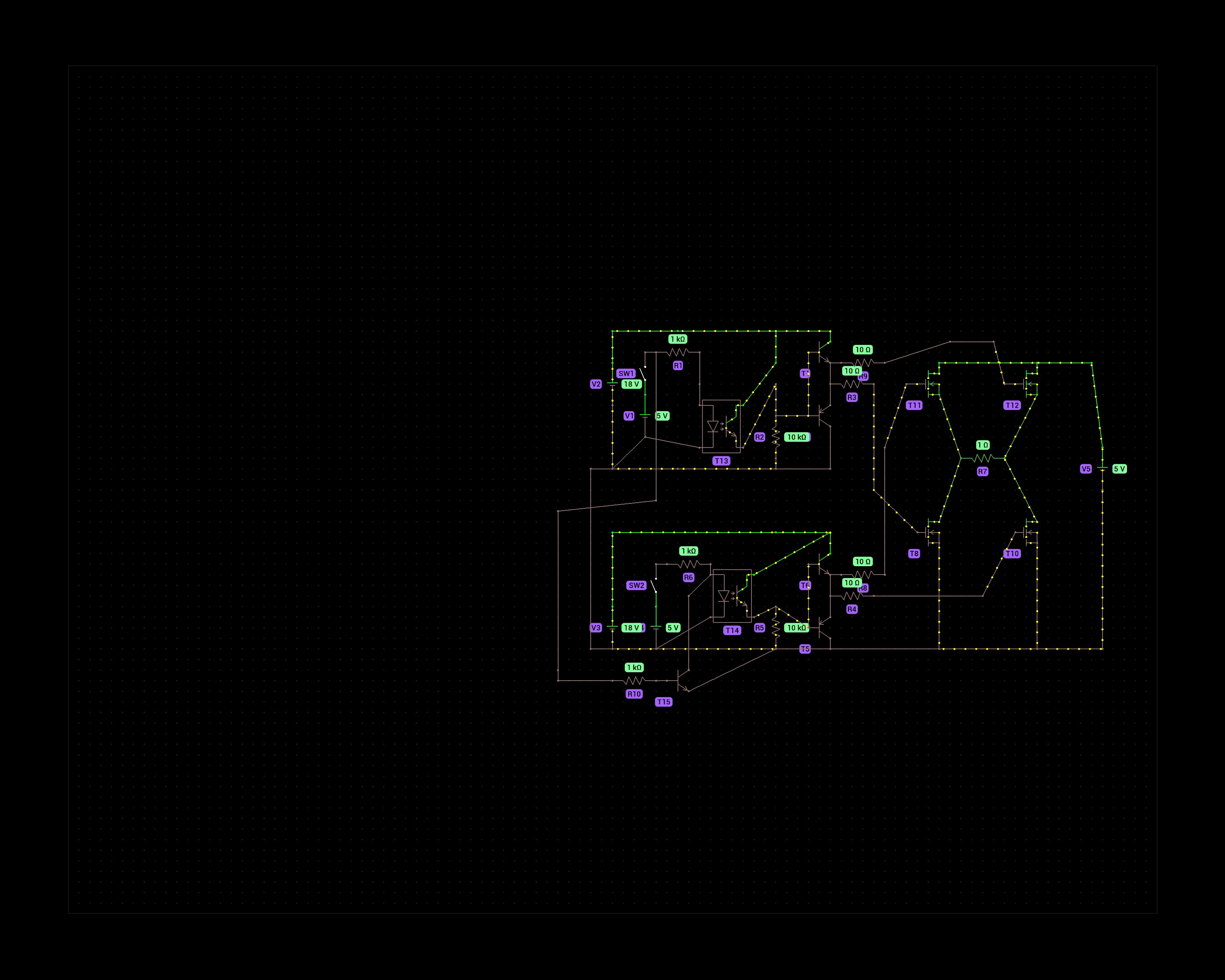this post was submitted on 07 Aug 2024
18 points (100.0% liked)
Ask Electronics
3325 readers
1 users here now
For questions about component-level electronic circuits, tools and equipment.
Rules
1: Be nice.
2: Be on-topic (eg: Electronic, not electrical).
3: No commercial stuff, buying, selling or valuations.
4: Be safe.
founded 1 year ago
MODERATORS
you are viewing a single comment's thread
view the rest of the comments
view the rest of the comments

In that case I would omit the extra transistors and use only the optocouplers.
What sort of application is this? Having 18V somewhere and a 5V supply too that can output several amps is quite unusual.
Thanks again for the advice. I made a working prototype and attached it to my pump. The PCB is also made at home which is something I'm trying to learn.
For now I've used just optocouplers to drive the mosfets, since pulling p-type gates down to above -24V seemed like a hassle. I've ordered some IR2210 gate drivers and intend to use those with PWM later to not have to use a buck converter.
Here's a video of the pump. https://drive.google.com/file/d/1qKDBLTbYi2Fbu3UOXpxqSoj00oueWK-K/view?usp=sharing
And the pump in action. https://drive.google.com/file/d/1--HyeJGtYS5dgsjgelE6CrOm2vbBmwXU/view?usp=sharing This version has a stepper motor instead of a DC motor. Stepper motors have low speed limit which is why I'm trying to change it to DC motors.
No problem :) Let me know if you need any help!
Well, the whole setup is a semi automatic greenhouse. It has a 12 channel peristaltic pump, grow lights, heater and a plant shaker for pollination. I'm attempting to grow indoor tomatoes and chili's. Not weed although I have learned a lot from weed growers.
The system runs on a 24V power supply so that is easily accessible. The 18V comes from an LM7818 and the motor speed will be regulated with a buck converter module.
If I were you, I would not step down the 24V, but use that to drive the motor with pwm. It requires a bit different H bridge but overall it would be simpler. But if you already have a converter module that is good enough this works too.
That would require an H bridge with two Pmosfets on the high side indeed. And a way to prevent the gate voltage from going below -20V on those.
The PWM frequency on arduino nano is also a bit slow for controlling a motor so a 555 circuit needs to be added then. I have a large amount of XL4016 modules that work well though.
Thanks for the advice!
I don't think the PWM on the arduino is slow for your application. Motors are actually great for filtering. Even if the current is not filtered, mechanically it is so slow that you can go as low as 100Hz and still drive the motor acceptably well.
I also worry about the LM7818. It drops about 6V, so at 330mA it burns 2W, which seems like the maximum for the package that I quickly pulled up. If you have a very efficient buck converter that gives you at most about 1A to drive the motor. Not a lot of overhead.
Also as I said already, you could just skip the whole thing and make everything work from the 24V using PWM. Since you want to drive it with an arduino that is not a difficult thing.
Good one. I haven´t considered that. The 7818 will only deliver current for very short bursts but perhaps that already is too much. I'll look into the PWM solution.